HEARING AID DISTRIBUTION SYSTEMS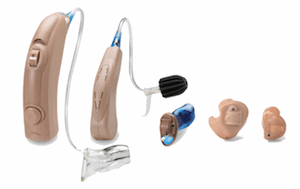
Many current discussions concerning hearing aid sales relate to how hearing aids are dispensed – what distribution system is being used? Where is the hearing aid industry going with regard to distribution systems? What is the best system? How will I survive? Just about everyone has a solution they think is most appropriate. I suspect that the distribution system that one thinks is best is that which they are using. This article will not offer a “best” suggestion, but instead, will report on “different” approaches that have been presented in the past, reinforcing that almost no ideas that we think of today are new and/or unique.
CURRENT MANUFACTURER TRENDS
Most major manufacturers currently seem to be following a model that was successfully promoted many years ago during the early days of hearing aid franchising, and then carried on exclusively with Dahlberg (Miracle-Ear) and Beltone after other companies moved away from sales contracts and chose to sell to anyone interested in purchasing their hearing aids. As a competing manufacturer against these two companies, and then later as a corporate vice-president of Dahlberg, I learned a very valuable lesson.
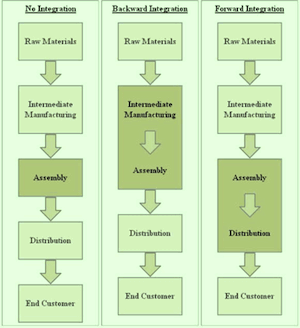
Figure 1. Examples of integration models for a company. Vertical integration as discussed in this section is best identified with the model on the right.
If you can control your sales, everything flows more smoothly: inventory control, work in process, projections for sales, cash flow, managing competition, etc. Large swings in sales could be avoided because when dispensers purchase only your product, you were not competing for dispenser sales against other hearing aid manufacturing companies. You could avoid having to compete with their sales specials, trips tied to purchases, new product introductions, etc. This practice has been embraced in the past several years with most of the largest of the hearing aid companies – they have moved to have ownership of their own hearing aid dispensing offices, and as such, don’t have to worry about competition sales in those facilities. Everything is controlled, meaning that income and expenses can be managed much better. The largest of the manufacturers that are engaging in this type distribution, but not to equal involvement, include: Sonova Group, William Demant Holdings, Siemens Hearing Instruments, GN Store Nord, and Starkey Laboratories. These companies are also most likely to serve the top end of the price market with their product branding. Vertical integration is a major feature of most of these companies, where they can control the design, development, manufacturing, and distribution of their hearing aids and other related products to the point of sale, whether this be in their own offices, or selling to dispensers who resell no more than one or two brands, and who are very brand loyal. Premium price selling allows these companies to generate profits sufficient in strength to continue funding development work for leading-edge technology.
OTHER DISTRIBUTION TRENDS
Over the years, the winds of change have been in action when offering options to the hearing aid distribution system at the time.
The following examples of modifications/changes to the hearing aid distribution system is by no means complete, but does represent past activities to which I was exposed while in my hearing aid company management positions. “Proposed” is the key word because many of these did not get off the ground, or had short lives. In many cases, the wheel was reinvented, and some actually emerged as significant distribution channels. Examples were selected based on how they might affect the hearing aid distribution system.
INDEPENDENT DISPENSER
But, before I move on to the history of hearing aid distribution system, a few words about being an “independent” dispenser are in order, because this seems to be the underlying “elephant” relating to any discussions about hearing aid distribution.
Is an “independent” dispenser really “independent?” To this I would say, “maybe.” If they own their own business, the answer is “yes,” but with a caveat. Even as an independent, there is still a tendency to want to belong to some kind of group, whether that be a purchasing group of some kind, or just to be treated as a “favored” dispenser by a given manufacturer – a desire to be recognized. Under this condition, if most of your business is conducted with a given manufacturer, you are technically independent, but controlled by that company’s policies, practices, and prices. So, you make the call.
FRANCHISES, OR DEALER CONTRACTS
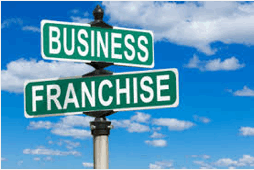 Many people refer to early dispenser arrangements with manufacturers as franchises, but in reality, they were closer to Exclusive Dealer Contracts. Dealer Contracts were exclusive in that the dispenser could sell only the company’s product that he/she represented. The manufacturer’s name, logo, and advertising was tied to this, and most often the business was required a sell a certain number of hearing aids per month in order to continue to use that name and the company’s sales and marketing materials. As such, a dispenser’s business was identified as being a Maico, Telex, Sonotone, Acousticon, Otarion, Beltone, Zenith, Radioear, etc. office. This continued into the 1970s when dispensers became involved in selling hearing aids from multiple manufacturers. This coincided also with the entry of audiologists into hearing aid sales.
Many people refer to early dispenser arrangements with manufacturers as franchises, but in reality, they were closer to Exclusive Dealer Contracts. Dealer Contracts were exclusive in that the dispenser could sell only the company’s product that he/she represented. The manufacturer’s name, logo, and advertising was tied to this, and most often the business was required a sell a certain number of hearing aids per month in order to continue to use that name and the company’s sales and marketing materials. As such, a dispenser’s business was identified as being a Maico, Telex, Sonotone, Acousticon, Otarion, Beltone, Zenith, Radioear, etc. office. This continued into the 1970s when dispensers became involved in selling hearing aids from multiple manufacturers. This coincided also with the entry of audiologists into hearing aid sales.
Hearing Health World, Inc. (1980) 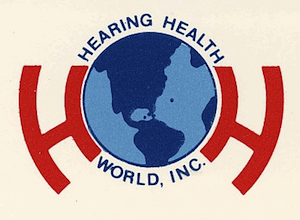
This was an investment opportunity to professionally design, direct, and operate a Franchise dedicated to helping consumers solve hearing health problems. The investment would:
- Set up three showcase stores – one in Manhattan, one in Queens, and one in Nassau County.
- Produce a Franchise Book to be utilized by the prospective Franchisee in learning about Hearing Health World, Inc.
- Make possible necessary saturation advertising for the three showcase stores including TV, Radio, Magazines, and Newspapers.
- Provide monies for promotional presentations around the country.
- Provide for the legal services necessary to establish a strong franchise operation.
- Secure products for all stores.
- Provide for stationery.
- Assure adequate cash flow during the first year of operation.
- Finance demographic studies.
- Staff at least 4 persons per store plus one professional audiologist on call.
- Provide a salary for the President and Chairman of the Board of Hearing Health World, Inc.
- Fund initial equipment purchases.
- Support capital for rent and utilities for one year.
- Establish an accounting/bookkeeping system and provide for its maintenance for one year.
- Establish a treasury fund for unexpected expenses at least equal to 10% of all the rest of the monies stated as required.
The development of the ACI Auditory Centers, Inc. was initiated by audiologist Otis Whitcomb of Milwaukee, WI. He believed that dispensing audiology franchises represented the best avenue for audiologists who wanted to establish their own practices, but lacked sufficient training or experience in business management to risk going it alone. A substantial boost to this development was the investment by the Gillette Company of Boston, MA to acquire a 20% interest in ACI Auditory Centers for an estimated $1 million. Although other corporations owned various hearing aid manufacturing companies at one time or another prior to and after this (Telex Communications with the Telex brand, Motorola with the Dahlberg brand, Criton with Maico, etc.) this seems to be the first time that a major consumer products corporation (Gillette) was to engage actively at the retail side of hearing aid delivery. For Gillette, the ACI investment was one of several “experimental” ventures into what company officials called promising, “low-tech” healthcare. Beyond its capital investment, Gillette was to provide research and marketing assistance to ACI, with the option to acquire more (or all) of the company should the concept prove successful. Approximately a year later, ACI bought back its 20% interest from Gillette. The repurchase was the result of corporate changes within each firm, and was said to allow ACI to better position itself to seek new franchises.
Any “fully-qualified audiologist” licensed and/or certified in the state in which he or she practiced, could apply to become an ACI Auditory Centers franchisee. Candidates would undergo a thorough professional and psychological screening process that evaluated their competence as well as their aptitude for success as a franchisee, and the applicant had to submit comprehensive financial statements. Such “full disclosure” was required because of the total start-up costs for a franchise (estimated at about $31,000 at that time).
Franchisees would pay an initial franchise fee of $7500, after which each franchisee was to pay ACI a royalty/ongoing service fee equal to 6% of monthly gross sales, along with a $300-per month fee to support system-wide advertising and marketing programs. The franchise term was for ten years, renewable for an additional five years at then-current ongoing terms, but with no additional franchise fee. Each franchisee was guaranteed a protected market territory “adjusted to market conditions and population density.” Franchise services included a one-week training program, an operating manual and marketing support guide, marketing and sales guidance, hearing aids (from multiple manufacturers), batteries, supplies, insurance, and practice fixtures and equipment.
The ACI franchise tended to follow the models of earlier Miracle-Ear and Beltone franchise agreements.
INSURANCE CARRIER AND PROGRAM ADMINISTRATOR DISTRIBUTION
Pharmaceutical Card System (1977)
We reported on this dispensing model in a previous article, showing how the United Automobile Workers (UAW) union agreement in 1977 resulted in a distribution system that involved consumers purchasing hearing aids from any participating physician, audiologist, or hearing aid dispenser. The program was administered through insurance carriers (State Blue Cross Blue Shield, Metropolitan Life, John Hancock, Aetna, Equitable Life, Travelers Insurance, or under self-insured programs that any of the UAW companies might have had), and then administered through signed-on physicians, audiologists, or hearing aid dispensers in the various states under Program Administrators, such as Pharmaceutical Card System (PCS). Metropolitan Life or State Blue Cross/Blue Shield.
The above action, and the fact that the U.S. Supreme Court Action voided ASHA’s non-sales hearing aid policy and Code of Ethics), helped to diminish the Exclusive Dealer Agreements and evolved into the hearing aid distribution system that existed primarily from about 1978 until fairly recently.
Blue Cross – Blue Shield (1986) ![]()
Insurance companies, specifically Blue Cross-Blue Shield (BC/BS), offered all Senior Security Plan members (Medicare Supplemental) what was called an excellent standard of hearing service at a savings of 30% to 60% or more. This was a Rider providing coverage for the hearing evaluation and for hearing aids – both at fixed rates determined by BC/BS. Reimbursement for hearing evaluations was set at $10 for one professional hearing examination per calendar year, administered by the hearing service provider arranged for by BC/BS, National Hearing Services, Inc., a wholly-owned subsidiary company of National Benefit Services, Inc. National Hearing Services (NHS) was a preferred provider organization (PPO) without restrictions on selections or frequency of purchase, but with substantial savings. A nationwide program, NHS’s participating providers consisted almost entirely of independent audiologists. While guaranteeing the highest quality, NHS negotiated a rollback in professional fees of 50% or more on complete audiometric tests, and savings of up to 50 percent off brand name hearing aids.
LOW-COST HEARING AIDS TO CONSUMERS BY AUDIOLOGISTS WITHOUT DIRECT DISPENSING
One of the first such distribution systems was that of Master Plan in 1971. But it was not alone.
AG Bell Association Hearing Aid Discount Program (1977) 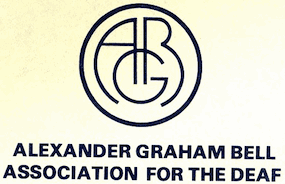
The Alexander Graham Bell Association for the Deaf initiated a Membership Program that allowed A.G. Bell members discounts on hearing aids under agreements made with individual hearing aid dispensers throughout the United States (just under 500 dispensers).
Upon presentation of the A.G. Bell Membership card, the hearing aid dispensers posted in an A.G. Bell brochure guaranteed a 40% discount off the “manufacturers’ suggested retail price” on the purchase of any hearing aid, initial tubing and ear mold. Batteries, cords, and repairs were not included. The program applied to all persons holding an individual membership in the A.G. Bell Association and to their dependents.
Associated Dispensing Service (about 1981 to 1983)
Associated Dispensing Service (ADS) of Baltimore, MD was designed to offer audiologists a convenient method of providing hearing aids without the problems of direct dispensing. Professional management was said to assure appropriate monitoring and follow-up care. ADS believed that all audiologists involved with rehabilitative services should offer hearing aid dispensing. If the audiologist could not directly dispense hearing aids due to legal or administrative restraints, this program was recommended.
The conveniences to the audiologist were listed as:
- You may continue to use manufacturer’s consignment hearing aids for evaluation.
- Accounts with hearing aid manufacturers and earmold labs do not have to be established.
- All billing is handled between ADS and the client.
- ADS pays for all postage and shipping costs to and from your facility.
- Each hearing aid is analyzed electroacoustically to assure that it meets manufacturer’s specifications.
- Hearing aids are covered by the manufacturer’s warranty.
- Each hearing aid is dispensed with a 30-day trial period that begins when the aid is fitted. No handling charges are assessed for returned hearing aids.
- Repair services are available for all hearing aids.
- Hearing aid accessories and batteries are available.
Audiologists’ Professional Assistance (APA), 1984
APA was identified as a professional company created exclusively for professionals, specifically audiologists who were interested in providing hearing aids with direct dispensing.
The Patient just had to fill in the appropriate information on an order form and mail it with the patient’s check or charge information to this office. The hearing aid of choice would be mailed immediately. A complete line of hearing aids from major manufacturers was available. An M.D. was the Medical Director.
Part II of Hearing Aid Dispensing Systems will be posted next week.







I appreciate that you are talking about the history. I have seen these manufacturers buying practices left and right. I can think of around a dozen companies who were bought out that now do less than 50% of the biz they did in the past. They are huge, ugly places which never understand the patient because they hire people who are not motivated to grow their own field. None of them ever understand truly how to dispense because they do not really have a respect for the Audiologist in the dispensing process. They might like some of their customers and respect them personally but every one of the biz I can come up with from the top of my head have been poorly managed. Go ahead, buy practices and kill them like they do. Doesn’t bother me.